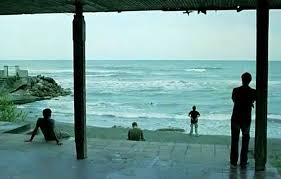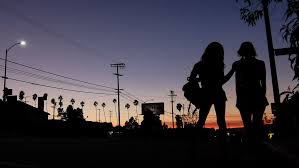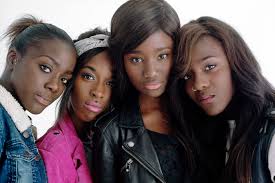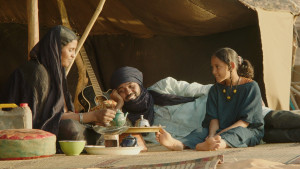It’s a truism that top 10 lists are fundamentally a silly endeavor.
There’s no inherent value, and maybe even a whiff of distaste, to ranking anything, but it’s also, let’s face it, kind of fun. And year-end lists also provide markers, for ourselves and others, of what we enjoyed at a certain moment in time, and hopefully a bit about why.
At Screencrush, Matt Singer prefaced his own list by noting, “In a year with so many great movies, there was only one way to narrow things down: Picking the movies that meant the most to me personally.” I think this is the right approach. The temptation to front-load everything with likely Oscar winners, the Year’s Most Important Films™, or titles that might speak to your critical acuity and fascinating arthouse taste is strong, but yielding to it isn’t of much value.
At its heart, “What were the top 10 movies of the year?” should be considered a way of asking, “What resonated with you in cinema over the last 12 months? What were you moved, intrigued, excited, or struck by? Which will last, for you?”
I think the films below will last, for me. There are many more: 2015 was indeed a stellar year for movies, and I haven’t come close to seeing most of the notable ones, much less all of them. (For additional arbitrary comparisons, you can find my top 30 here.)
And while the final list I’ve arrived at violates a core belief I’ve had all year – namely, that any list without What We Do In The Shadows is fundamentally flawed, because that movie is hilarious – it’s still an accurate reflection of things I’ll return to, and so therefore things I presumably think you ought to check out if you haven’t.
10. Phoenix
Given the glut of films focusing on the Holocaust, it’s a little strange to think of how few there are that survey its immediate social aftermath. Phoenix is here to fill that gap.
Sure, I realize that more or less all of recent German cinema has grappled with its legacy, but the tendency has always seemed mixed with anxiety about the Economic Miracle (see: Fassbinder). Many of those films are outright masterpieces, but the real, basic, haunted question – how does one live now? – has often proved elusive.
And it continues to do so in Phoenix. A woman, returned from the camps but presumed dead, haunts her previous life. She’s the same, but also somehow unrecognizable. In order to connect with those she holds closest, she must impersonate herself, for a man who knows he betrayed her but still has uses for her yet.
We are in Vertigo territory. The film proceeds like a dream – key shots feature hollowed out buildings, ruins, and a deep sense of the uncanny. No one, it turns out, really wants to hear about the camps; it’s inconvenient. The film becomes a mystery – not just who did what to whom and why, but how anyone can soldier on in so unstable a world.
Heavy? Sure. But it’s also gorgeous and appropriately unnerving. And it features the single greatest mic-drop ending of 2015.
9. Brooklyn
No film, with the arguable exception of Bridge of Spies, hearkened back more overtly to older Hollywood than Brooklyn. In its luminous close-ups, family dramas, earnest yearning, and belief in the value of basic dignity and the striving to find fulfillment, Brooklyn is an ode to the American Dream, released in a year where such things seem mighty quaint. More power to it.
Saoirse Ronan almost literally lights up the screen, in a wonderful performance as an Irish shopgirl who finds a new life in America. Torn between home and her new land, she is faced with real decisions – not least of which is what “home” is really supposed to mean. We wait and watch, hoping her choices align with ours, an older convention in cinema we don’t see quite so much anymore. Are the ones she arrives at correct?
That’s the wrong question. They are hers, finally, and – in perfectly framed, lit, and colored moments – they become ours, too. Brooklyn is a rebuttal against anti-immigrant fervor, but it’s the quietest rebuttal possible. It tells a simple story beautifully, and it’s a story we could stand to hear more often. (Review here.)
8. About Elly
Asghar Farhadi’s feature-length debut made a belated appearance to North American audiences this year, following his brilliant features A Separation (2011) and The Past (2013). But, in its poetic focus on the individuals living in his native Iran, and their conflicted desires and responsibilities, it fleshes out those masterpieces and adds even more nuance.
Casually updating Michelangelo Antonioni’s L’Avenntura and making it his own, About Elly also focuses on a group trip, a mysterious disappearance, and its ramifications for everyone involved. The pace is seductive, and we find ourselves drawn into a mystery we know might not be solved.
It’s a dreamscape haunted by very real, very wide-awake social pressures, a murder mystery where there is no murder and no villain, and a film that is more focused on brief, meaningful glances than the words being said. Fans of his earlier/later films will be entranced, but then so will everyone else.
7. Romeo Is Bleeding
A surprise inclusion!
No, probably not. I’ve now written about this excellent documentary twice, and chatted with its director extensively about the film, so this is a bit of a no-brainer.
Jason Zeldes’ portrait of life in Richmond, CA and a group of young poets launching an adaptation of Romeo and Juliet is deeply moving, inventively filmed, and masterfully edited. It was easily my favorite documentary of the year, but it was also one of the best and most personally felt films I saw of any genre.
Find screenings and updates about Romeo Is Bleeding at the film’s website or on Facebook.
6. Inside Out
Pixar’s latest masterpiece raises an interesting question: What do you with a kids movie that isn’t really made for kids?
Inside Out operates in a kind of Neverland, equal parts innocence and experience – there are lessons for the young viewers, paired with enough adventure and hijinks to keep it from turning ponderous, and then there is this entire other well of wisdom it’s drawing from, which is most decidedly on the Adult side. There’s a nostalgic current not just running through it, but actually governing its logic. Inside Out is a kids movie for adults who still remember they were kids once.
Its central conceit – that our inner lives are governed by the competing interests of different emotions in a sort of cognitive headquarters, who, like the gods of Greek mythology, argue with each other, come to compromises, and eventually learn to live together, while resolutely pursuing their own ends – is clever, and allows for a lot of funny riffing and narrative. (The garbagemen who throw out all memories of piano lessons except Ode to Joy and Chopsticks will never fail to make me smile.)
But it’s wiser than that. The downer character of Sadness ends up being central, despite the fact we wish it weren’t. Sorrow can’t be banished, and some amount of melancholy – the collision of Joy and Sadness, with, maybe, a dose of Fear, Anger, and Disgust – will always creep in. And that’s really okay. In fact, that’s what it means to be alive.
5. Tangerine
In a marketplace that all too often finds cys-male actors portraying trans women in prestige pictures, Tangerine is a bracing reminder that it doesn’t have to be this way. It also happens to be a hilarious, visceral, heartbreaking march through a Los Angeles we don’t often see on the screen, filled with immigrant cab drivers and their families, assortments of junkies, drunks, pimps, and cops, and that ubiquitous glare from the sun beating down.
But the main draw here is twofold: the two lead performances – Kitana Kiki Rodriguez as Sin-Dee, fresh out of jail and on a mission, and her long-suffering friend Alexandra (Mya Taylor) – and the fact that the film was shot on modified iPhones with custom-made lenses.
Transpiring over the course of several frantic hours in late December, it’s the Christmas movie you didn’t know you needed. Appropriately enough, it ends on a moment of tenderness and grace, after all the shouting has stilled. It’s a ramshackle masterpiece. (Review here.)
4. Mad Max: Fury Road
Decades after the last installment, director George Miller exploded back onto screens with the kind of film that gives hope to fans of action movies everywhere.
It’s a dystopian, feminist adrenaline-overload, from its first moments to its last. Incredible practical stunts, filmed in ways that are never muddled and keep the action front and center, dropped audiences’ jaws, and the film has even racked up a fair number of prestigious awards, something most of us had long assumed was off limits to genre pictures.
But this is no normal genre picture. The political subtexts are hard to miss, and so is the artistic mastery. Car chases have never been so visceral, and guys playing flame-shooting metal guitars have never been so awesome. Buckle up. (Review here.)
3. Girlhood
Another title on this list has understandably topped many people’s compilations of the year’s best musical sequence, including David Ehrlich’s impossibly classy annual super-cut. But as far as I’m concerned, the “Diamonds” sequence in Girlhood, in which our protagonist and several friends dance in a hotel room to Rihanna, was 2015’s most joyous cinematic moment.
The film itself isn’t exactly joyous – it’s a coming-of-age story set in Paris’ banlieues, in which Marieme (Karidja Touré) grapples with gender expectations, poverty, race, and all the intersections in between, and finds herself at a number of crossroads as adolescence ends.
It’s an often gritty depiction of teenage life on the social margins, but it also makes time for moments like these, when friends shrug off all the things foisted on them and share a moment of release and longing. It’s an unforgettable scene in a film filled with them. (Review here.)
2. Timbuktu
Abderrahmane Sissako’s portrait of encroaching evil in the desert of Mali is neatly divided in two: languid, deeply humanistic sequences of rural life and family relations, on the one hand, and unimaginable tragedy imposed by self-appointed, and self-deluded, spokesmen for the divine on the other. The slowness and beauty of the former make the final gut-punch of the latter all the more powerful.
With gorgeous cinematography, some sly absurdist humor, and stellar performances all around, Timbuktu aims to enrapture and outrage. It succeeds enormously. (Review here.)
1. The End of the Tour
Many of the films above vied for this spot, but in the end, I just really have to be honest. James Ponsoldt’s semi-biopic of legendary writer David Foster Wallace hit me the hardest of all the movies I saw this year.
I didn’t write a full piece on The End of the Tour, but it remains the only movie this year I saw four times, the only one I’ve recommended to everyone I know, and the only one I finished and then promptly read the screenplay. That sounds a lot like someone’s favorite movie.
As Wallace, Jason Segel turns in an unexpectedly moving performance, and Jesse Eisenberg is at his reptilian best as the interviewer who idolizes, envies, and despises this man, who puts his own writing to shame and who he wants to be, regardless of his protestations.
It’s a stealth production – The End of the Tour exhibits all the trappings of a conventional biopic, but has the good sense to focus instead on a sliver of time and the nuances of a brief relationship. Instead of dramatic, fiery set-pieces, it builds an increasingly fascinating mood based on nuances of character, and ends up confronting issues of loneliness, jealousy, and what it means to be authentic in a fallen world.
DFW fans may not get what they came for, and anyone expecting dramatic explosions will end up disappointed. But The End of the Tour is an actor’s showcase, an exploration of American ennui for a certain segment of people at a certain moment of time, and the tightest script around. There’s beauty here, and pain. It’s the best movie of the year.
Again, for me. Did I egregiously omit your favorite? Tell me about it in the comments!
Happy new year, kids.











